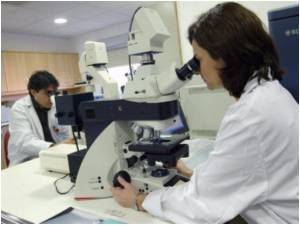
Rett Syndrome is a single-gene neurological disorder that affects girls. Development slows during the first year of life, then regresses, as toddlers lose speech, mobility, and hand use. Many girls have seizures, orthopedic and severe digestive problems, as well as breathing and other autonomic impairments. Most live into adulthood and require total, round-the-clock care. Rett Syndrome affects about 1 in 10,000 girls born each year.
The papers result from a collaboration between the labs of Adrian Bird, Ph.D., Buchanan Professor of Genetics at the Wellcome Trust Centre for Cell Biology at the University of Edinburgh, and Michael Greenberg, Ph.D., Department Chair and Nathan Marsh Pusey Professor of Neurobiology at Harvard Medical School.
The Bird and Greenberg labs have been working together since 2011 as members of the MECP2 Consortium along with Gail Mandel, a Howard Hughes Investigator at Oregon Health and Sciences University. The Consortium, launched by RSRT with a $1 million lead gift by RSRT Trustee Tony Schoener and his wife Kathy, fosters novel alliances among leading scientists to interrogate the molecules at the root of the syndrome.
Professor Bird discovered the MeCP2 protein in 1992. In 2007, he showed that affected brain cells in a mouse model of Rett Syndrome can regain function, even in late stages of the disease, suggesting that the disorder is curable. Despite this unexpected breakthrough the function of the Rett protein remains elusive.
In search of the function, the Bird lab set out to identify the key domains of the protein. Mutations found in individuals suffering from Rett led them to their answer. By focusing only on "missense" mutations, which alter a single amino acid, the researchers were able to hone in on two key domains where the mutations aggregated. The first was the well-known methyl binding domain (MBD) which is the site where MeCP2 binds to methylated DNA, thereby modulating the expression of downstream genes. The second key domain is where MeCP2 binds to a molecule called NCoR/SMRT, a large multi-protein machine that shuts down genes. The Bird lab coined this domain the NCoR/SMRT Interaction Domain (NID).
Advertisement
Source-Eurekalert












